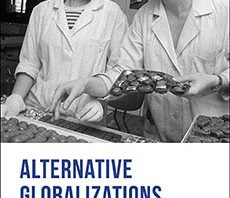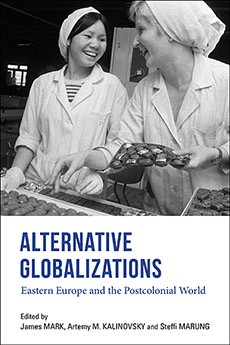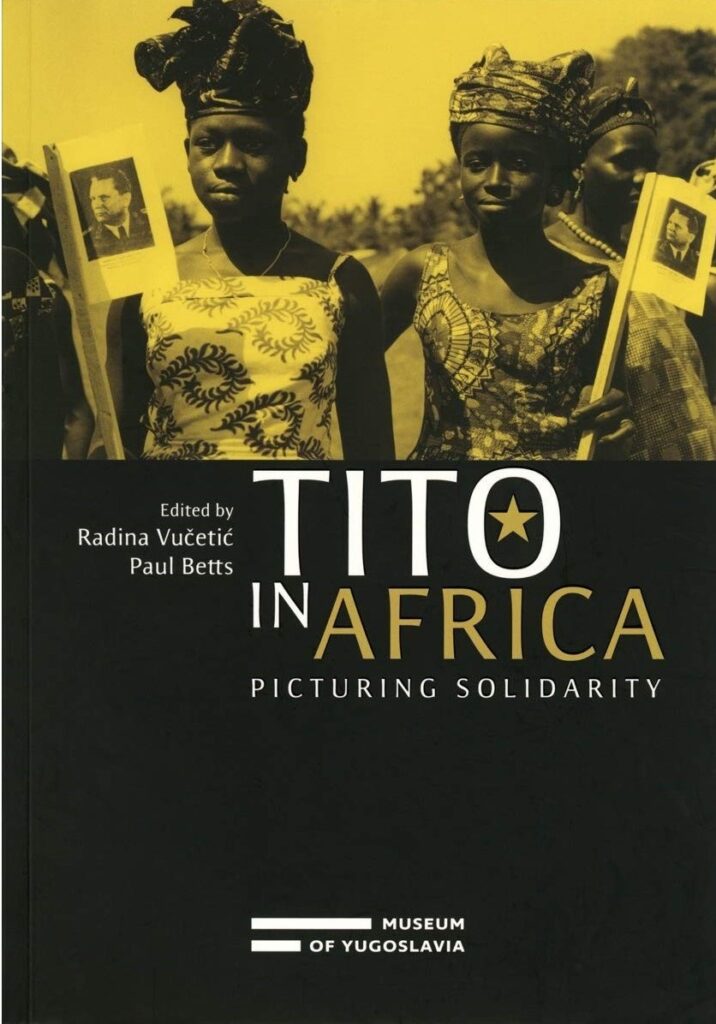In this three-part interview, conducted, transcribed and edited by Zoltán Ginelli, history professor James Mark talks about his latest book

James Mark is a British Professor of History at the University of Exeter. His research focuses on the history and memory politics of state-socialism in East Central Europe from the perspective of broader global histories, transnational processes and comparative methods. In 2019, James finished leading two 5-year international research projects: 1989 After 1989: Rethinking the Fall of State Socialism in Global Perspective and Socialism Goes Global: Cold War Connections Between the ‘Second’ and ‘Third Worlds’. The two projects focused on how to reinterpret state-socialism, the Cold War, the 1989–91 system changes and the postsocialist period in Eastern European history as part of global processes and in the histories of colonialism and anti-colonialism. The titles of the two projects came from two published articles.[1] In 2019, these projects published several books, such as 1989: A Global History of Eastern Europe, and Alternative Globalizations: Eastern Europe and the Postcolonial World, but three further volumes are in also production, one of them entitled Historicizing Whiteness in Eastern Europe. Readers might also be interested in the exhibition Tito in Africa: Picturing Solidarity organised as part of the second project and bearing an exhibition book (The Wende Museum, Pitt Rivers Museum, Museum of Yugoslavia). The exhibition presents the African round-trips of Yugoslavian president Tito in the 1960s and 1970s in the context of the development of the Non-Aligned Movement and the Third World.
Previous interviews and introductions: eurozine.com | a2larm.cz | a2larm.cz | 15min.lt | jacobinmag.com | polandin.com
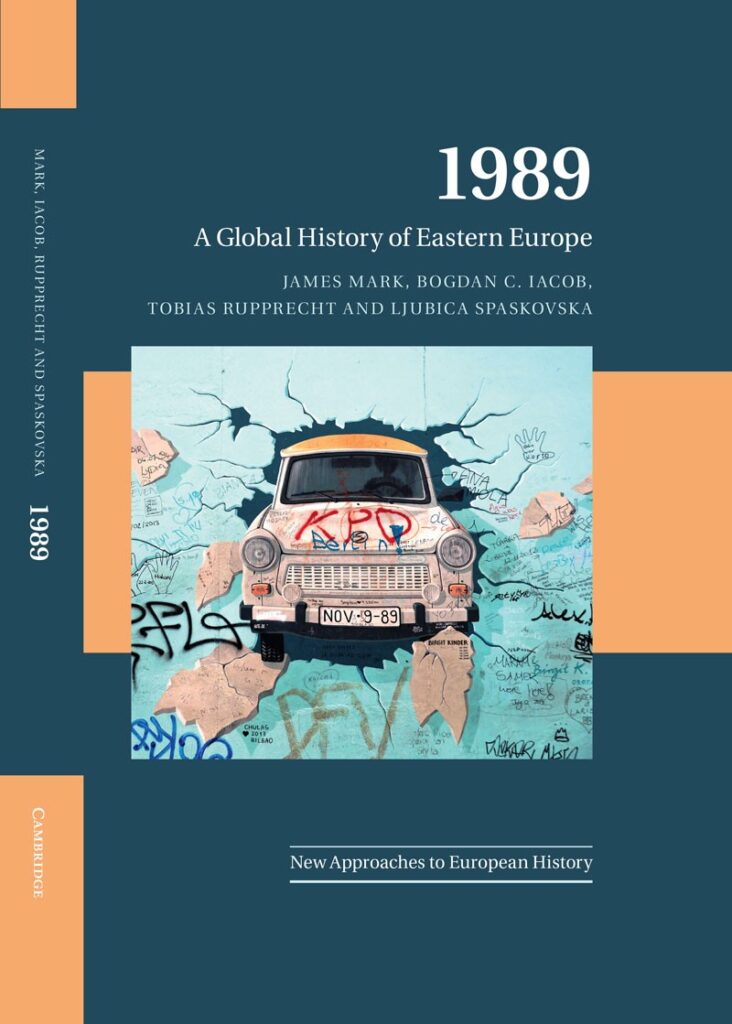
PART II – 1989’s “dirty little secrets”: Debt, migration, and race in global (post)colonialism
ZG: In our previous discussion, we talked about the way in which a global historical perspective can help critique the dominant Western narrative of the system changes in 1989. Let’s now turn to how this socialist globalisation developed in the competition of different forms of globalisation.
In your chapter with Yakov Feygin in the Alternative Globalizations book, you write that the socialist world was a great rival of Western globalisation, and there were powerful attempts to construct an alternative global economic system, but due to the process of West-led financialisation as a result of the oil crisis, the socialists couldn’t win in the end.[1]
JM: Eastern Bloc elites really struggle from the 1970s on, because they don’t have expertise in this area. The Bloc could play a global role in the 1960s, because that era was all about development economics and supporting various national revolutions or national developments, in which their regional elites had expertise dating back to the interwar and before. But new forms of financialisation, and technological revolutions, prove very difficult for them. Their systems struggle with the massive technological changes in transportation, microchips and miniaturisation – as new work from Peter Svik and Viktor Petrov is exploring.[2]
But in terms of these new forms of financialisation and indebtedness in the late 1970s, Eastern European experts at world economy institutes from Budapest to Moscow don’t really know how to respond. They reflect on having lost control, on not having the sufficient expertise to really control how this new financialised world economy and its capital flows work. In the end, in order to deal with debt, Poland and Hungary have to join the IMF, and through this their reform elite is further educated into a capitalist form of globalisation in the 1980s.

ZG: This
wave of financialisation had a huge impact on the global relations of
indebtedness, and thus you also deal in your projects with the global history
of indebtedness connected to Eastern Europe. How did global relations of
indebtedness condition socialist globalisation and the journey towards 1989?
JM: Debt was a very important factor in undermining a form of socialist globalisation and integration, and providing a re-education for reform elites in late socialism towards the norms of contemporary global capitalism.
The story is well known that states became indebted in order to modernise industries that were supposed to have the potential to create export industries producing high-quality goods.[3] Eastern European states – not all – borrowed cheap petrodollars following the oil crisis in the early 1970s, and they became increasingly indebted already by the late 1970s. The sudden rise of interest rates in the early 1980s – the so-called Volcker shock – hits them hard, and the hope for rises in productivity in their factories never materialises, so they can’t pay the loans back.
But what is less known is how this Eastern European debt crisis intersects with global crises. There are parallel debt crises going on at this particular moment, not only in Eastern Europe, but also in Africa and in Latin America, and these interact with each other.
So this is not simply an Eastern European story. Many Eastern European states are owed money by African states. Huge amounts had been loaned as part of solidarity projects from the late 1950s.

With the crisis, the question of whom they were going to pay suddenly became an important one. African, Latin American and Eastern European states want to pay back Western banks and financial institutions through the so-called ‘Paris Club’ first, because they need to stay in their good books in order to continue receiving loans, to roll them over, and to keep themselves solvent. In turn, they became much less interested in paying each other back and they all start looking to the West, and this starts to undermine what is left of the values of solidarity that brought non-Western countries together. As hard currency repayment to the West became the order of the day, non-Western states either looked to what hard currency they can get from each other, or they engage in barter relationships in order to cling on to what hard currency they have to pay back the West.
Another consequence was that they start to treat migrant workers in Eastern Europe in very different ways. Vietnamese, Mozambicans, and Cubans who initially came to Eastern Europe – from the early 1970s – were often part of training programs. The sending countries were often exporting unemployment, but they also wanted these people to have a good quality technical education, so they could return as useful assets into the service of their local liberation struggles or revolutionary projects. But by the 1980s, under the pressures of indebtedness, these workers were increasingly seen as economic units to service loans, and started working in export industries in order to provide hard currency. As Alena Alamgir and Christina Schwenkel explore in our Alternative Globalisations book, they became unofficially reconceptualised as economic migrants, to service the needs of struggling, indebted Eastern European economies – rather than as comrades to be trained in the service of a wider socialist global project.
This 1980s shift in indebtedness is important in explaining how previous migrants start to become othered, resented, seen as part of an alien socialist internationalist world, how they simply become economic migrants, people who shouldn’t be here in Eastern Europe.
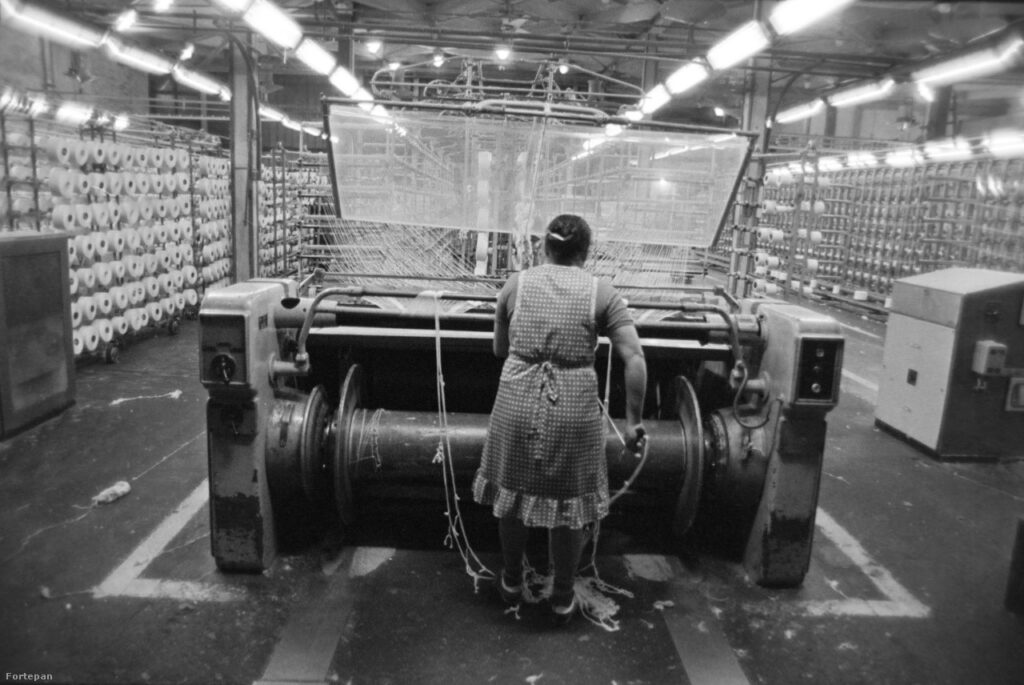
And they are treated less well, they don’t have to be paid so much, they have fewer welfare benefits than citizens of Eastern Europe, and indeed often receive less than other migrant workers from white Eastern European countries who work alongside them. In 1989, many of these workers were forced to leave across the region.[4]
ZG: The history of 1989 is dominated by narratives that give primary agency to the West, while what is also perhaps important in this global history is that different regions or countries had different roles in these global processes. Recent literature has shown why the Third World is important in understanding Eastern European relations towards the West, because it emerges as a sort of intermediary space, sometimes a place of exchange, or a place of testing ideas or theories, or a source of originating ideas, which then come back to reshape European contexts.
Is there a special role of Eastern Europe in this global history, and why is the role of the Global South or the Third World important?
JM: Our projects focused on Eastern Europe in a global context and on the many ways in which the region’s relationship with Latin America, Asia and Africa needed to be integrated into its histories. In the years after WWII, particularly in the 1950s with the acceleration of decolonisation and the breakup of Western European Empires, the relationship deepens between the countries of the rapidly expanding ‘socialist camp’, with similar statist developmental projects or linked by a common anti-colonial sensibility. Our volume Alternatives Globalisations explores economic, cultural, social, and intellectual aspects of this encounter.
Eastern European communist elites saw their region as part of this broader postcolonial world.
Many Eastern European countries had themselves been born out of empires only a generation previously, and then had only just thrown off their recolonisation by Nazi Germany. Many saw the presence of the Red Army as a further colonisation of the region: in 1956, in the wake of the invasion of Hungary, British Prime Minister Anthony Eden noted that the Soviets had become the most successful colonisers of the postwar period in terms of the expansion of territorial control and the sheer number and extent of its ‘subject peoples’. But for the new Communist rulers, Eastern Europe was again seen as a group of fragile states that need to be defended from Western imperialism. For example, when the Polish Communists sought alliances to defend their Western borders, which were not recognised by Western Germany until the early 1970s, they looked to the UN and many decolonising countries for support in their struggle for ‘self-determination’, because these countries understood the fragility of establishing new states.[5]

At the same time, Eastern European elites saw their countries as more developed – “slightly more developed developing country” as Yugoslav politicians put it – than these countries emerging from Western European Empires and wanted to offer economic support through developmental assistance and non-conditional loans. However, this was not only a communist-era story, but embedded in the longer history of Eastern European developmental economics.
Eastern Europe has been a foundational space of thinking about how to escape peripherality, and it was seen as such by the League of Nations, following its involvement in the post-WWI reconstruction of the region. It is no coincidence that many of the most influential postwar developmental economists originated from Central and Eastern Europe.

Often they became important through their careers in other countries, in Britain, the United Nations or other places, but nevertheless these models developed in conversation with questions of Eastern European peripherality and agrarian backwardness, and became of global relevance and got promoted in the UN after WWII. This was a world in which Eastern European experts felt comfortable, since they have globally useful expertise. We should note of course that these models were not only developed in Eastern Europe: Latin America’s promotion of autarkic import substitution industrialisation is very important as well. The relationship between Eastern Europe and Latin America in the evolution of this developmental approach is also an interesting story – as we see in Joseph Love’s Crafting the Third World.[7]
The relationships with the Third World were also important for internal legitimation. After the traumas of Stalinism, the idea that there is a rapidly expanding, progressive world beyond Europe was directed especially at a younger generation under state socialism.[8] Eastern European elites could play global roles at prestigious international bodies, and in this sense anti-colonialism enabled them to overcome restrictions on a desire for globality that Western European Empires had previously frustrated.
We might remember that some Polish, Czechoslovak and Hungarian elites in the interwar period had argued for colonies in the name of economic sovereignty and in order that they become ‘proper’, full white European nations. After WWI, these new states were regularly looked down upon in the West.
Poles were called ‘kaffir’ by Jan Smuts, and ‘orientalised Irish’ by Lord Robert Cecil; the former argued that Mandates should have been used in Eastern Europe in the place of what he called ’embryo and derelict states’. In a strange reversal, the collapse of empires in the 1950s then appeared to offer, perhaps for only two decades, another route to find this globality and thus seemingly become fully respected Europeans. This is one reason why this ‘anti-colonial globality’ could be so appealing.
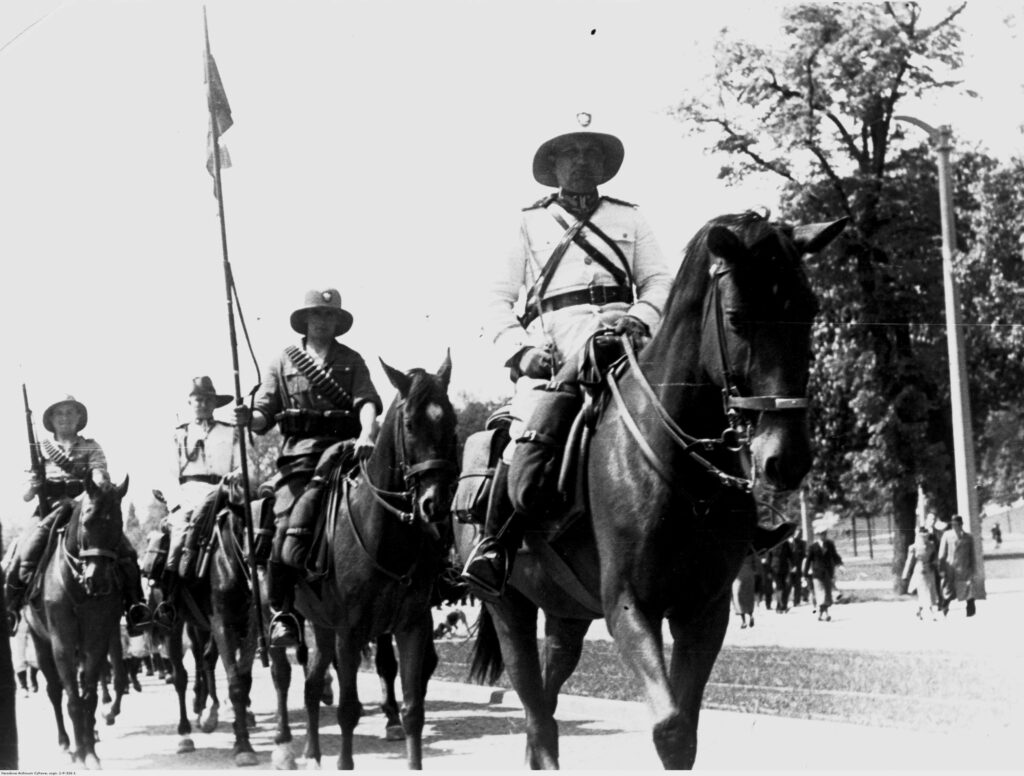

But of course Eastern European elites, at different speeds in different countries, turned away from such anti-colonial internationalism across the 1970s and 1980s and sought to “return to Europe”.
Europeanisation in the late Cold War is not only a rediscovery of linkages in a continent severed by the Iron Curtain, but is also a process of othering, of getting rid of socialist internationalism, of distancing Eastern Europe from regions of colour, and from Islam. This is a “dirty secret” of 1989, which was also about the expulsion of colour and the restriction of others’ mobility.
The hopes for greater mobility for Eastern Europeans stood alongside the expulsion of hundreds of thousands of labour migrants from the Global South and of 300,000 Muslims from Bulgaria in that momentous year. Now that the Iron Curtain was no longer there to protect Western Europe, Eastern European countries quickly turned themselves into border guards in the 1990s, returning non-European migrants who had been heading westwards, as they performed their Europeanness for a European Union they wished to join. By 1994, UN Secretary General Boutros-Boutros Ghali could claim that the Iron Curtain had moved from Central Europe to the Mediterranean.
The “return to Europe” story has a very important side to it, which is very little addressed: it still remains a kind of heroic national story of liberation, and not one also embedded in a history of colonialism and postcolonialism.
ZG: 1989 is also indicative of the “postsocialist amnesia” of forgetting all these past relations, particularly with the Third World (or later called the Global South). The ruling, anti-communist narrative is that these relations were only about socialist internationalism as the ideological expansion of the socialist or communist world, through which anti-colonialism and anti-colonial solidarity also gets politically discredited. It is also interesting to look at what the political discrediting of the concept of the Third World as an emerging anti-colonial world, and its depoliticisation through the term Global South, meant for socialist Europe. The “return to Europe” was a process of not only returning to whiteness and the position of the ruling civilisation in the West and Europe, but also concealing all these previous interconnections through dismissive civilisational narratives and discrediting socialism as a global process. What do you think?
JM: But that amnesia is selective: ruling nativist, populist governments in the region have also re-discovered these links as they seek out a new in-betweeness that gives them bargaining power against what they consider the ‘new colonialists’ in the form of a liberal EU. China and Eastern European governments subtly refer back to their bonds under socialism as they build new economic links. But, from the point of view of scholarship, I think that there is a younger generation of scholars, especially from the left, who are seeking to overturn these processes of forgetting. Not that their new histories want to justify return to any kind of former state socialism, but rather they are critiquing exactly this amnesia, which is embedded in the types of history that Eastern European historians chose to pursue after 1989, which mainly focussed on nation and region.
These new approaches are interested in thinking about Eastern European histories as part of the global history of empires and their ends, or as a ‘semi-periphery’ in the global capitalist system. In this respect, 1989 may be understood as an interesting mixture of neocolonial and anti-colonial revolutions – if one wants to be provocative.
On the one hand it was anti-colonial, because for many oppositionists it was about removing the influence of the Soviet Union from Eastern Europe: independent nations’ struggle against Moscow. One of course should always note that many communists encouraged nationalism, especially in the last decades of the Cold War, which set the tone for dissidents to express or reinforce this idea of independent nations, so nationalism is not just a dissident discourse.
On the other hand, this new anti-colonial discourse also stripped off any sense of being connected to other anti-colonial movements worldwide. In the 1980s, Noam Chomsky was very critical of Eastern European dissidence for only thinking of itself. Oppositional movements in the Eastern Bloc could of course support common anti-Soviet struggles, such as the fight of Afghans against Soviet occupation. Remember that the Polish Solidarność movement’s stamps for their underground mail used images of the Mujahideen and those Polish fighters who went to Kabul. But that was the limit. Of course this is perfectly understandable, because the communists in Budapest, Prague, Warsaw, and Moscow all officially supported anti-Western anti-colonialism, so oppositionists wanted to define themselves against that world. Kim Christiaens explores in Alternative Globalisations why Poland’s Solidarność movement could not ally with the anti-apartheid in the 1980s, partly because the Warsaw communists supported the anti-apartheid struggle, but also because there had been a large right-wing Polish emigration to South Africa, especially in the early 1980s, which had been funding them. Despite commonalities in trade union struggles against illegitimate power, Solidarność could not be seen as too supportive of anti-apartheid, since they would have risked losing an important source of funding.[9] There are lots of important stories like this, showing an anti-colonialism that had become de-globalised, and nationalised.
On the other hand, the African left in the late 1980s had another perception of Eastern Europe’s transformation and responded differently to the fall of state socialism: they saw it as the reconstitution of a Northern, white, neocolonial world.
They had seen the benefits that Africa had accrued from the division of Europe. Progressive regimes had socialist supporters, and could play off the socialist East and the capitalist West against each other. They feared that with the fall of the Iron Curtain, they would be excluded. And in many ways they were right.


From the late 1980s foreign direct investment to Africa falls precipitously and gets diverted to Eastern Europe: it is perceived by investors as the safer bet, with a more educated workforce becoming available to Western companies, and a market with greater prospects that is now opening up. Long before critics of EU migrant policy started to use the term, it was Africans in the late 1980s who revived the concept of Fortress Europe – a term first used in the last years of WWII in the defence of Nazi Fortress Europe, Festung Europa – to protest their coming exclusion. As Boutros Boutros-Ghali said in 1994, the Iron Curtain has moved: it no longer divides Europe, but divides the Mediterranean, running between the Global South, Africa and Europe.[10] This is something we don’t think much about when celebrating 1989.
1989 is celebrated as this great European moment in coming together, but not only do we not think about the bordering of Europe and the humanitarian crises in the Mediterranean and North Africa, we also don’t think about the importance of 1989 in leading to this outcome.
German activists have in the last decade connected the hypocrisy of celebrating the Wall’s Fall against the background of erecting external borders, noting that more people died in recent Mediterranean migrations than in attempts to cross the Iron Curtain before 1989. But still we don’t want to connect these two events and these two processes. That’s an important part of rethinking 1989 today and how we got to the Europe we have now.


ZG: This leads me to ask about how and why your project focuses on coloniality and decoloniality in Eastern Europe in connection to socialist globalisation? This topic relates to recent academic debates about connecting postsocialism and postcolonialism, both in terms of epistemology and history, looking also at the historical connections, parallels and similarities between the two.
An important element of these debates is the conceptualisation of race in postsocialism: as you noted, Eastern Europe has become this colour-blind, but white region. Race and racism as an issue has also been marginalised in public discourse since the 1980s, or interpreted only in local terms, like in the case of understanding the histories of our own Jewish and Roma ethnic minorities, but not in a global sense of how our relationship to global racial ideas and positions have changed. In this regard, I’d like to return to the often racist migrant discourse you mentioned, which emerged in recent years (particularly since 2015), and how after the system change the history of incoming non-European migrants during socialism and our historical relations to race have been completely forgotten.
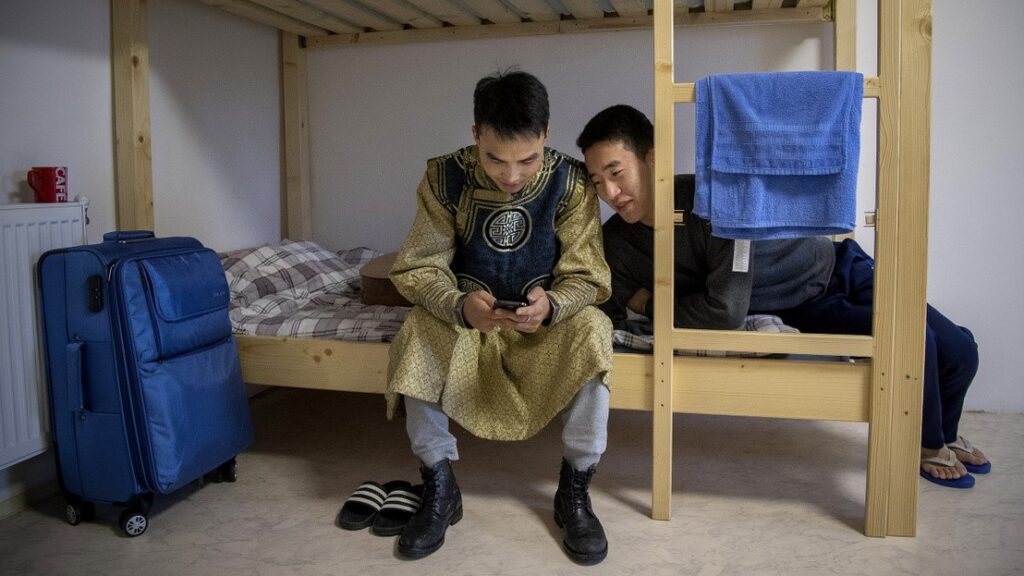

This is a critical issue if we consider that despite anti-migration propaganda, Eastern European countries are now increasingly taking in migrants, both as labourers and students, due to growing labour shortage as a result of increasing emigration and low birth rates, international competition in education and the labour market, and in order to relieve the burdens of indebtedness. Since migration patterns are based on historical connections, socialist era migratory links still condition some of these migration flows. For example, it is no coincidence that Hungary still receives migrant workers from Mongolia and Vietnam. How can the history of socialism and 1989 in a global perspective help us understand contemporary Eastern European relations to race?
JM: First of all, many of the things I’ve mentioned are Pan-European phenomena. Some scholars, such as David Theo Goldberg, have looked at how whiteness, and the colonial experience that produced it and gave it power, are not sufficiently interrogated in the constitution of what it means to be European.[11] Some scholars critique the omissions in the way in which many Europeans remember, exploring how Western Europeans in particular place the Holocaust at the centre of Europe’s memorial culture, necessarily stating ‘never again’. Yet this framing has also acted as a distraction from thinking about colonial violence and its relationship to global racial hierarchy and whiteness.
Historians may write about the connection between the two – that the Holocaust was colonial violence ‘boomeranging’ back into Europe – but the continent’s memorial culture is based on the idea that the Holocaust in a ‘civilised place like Europe’ is most worth remembering. Michael Rothberg has argued that Europeans need a ‘multidirectional memory’ that can include both.[12] Over the past decades, Eastern Europeans have argued for the inclusion of Communist violence – sometimes controversially dubbed ‘genocide’ – into a pan-European memory based on ‘never again’, as Laure Neumayer and Jelena Subotić have explored in fascinating recent books.[13] But this Eastern European intervention ensures that Europeans’ consideration of historical violence and its relationship to the present remains very Eurocentric. There have of course been many – from Aimé Césaire in the late 1940s to those who advocate for justice for the genocide in German South-West Africa today – who call for this wider understanding of European violence that connects these experiences inside and outside Europe – but they do not have the same clout.
If you want to think about race, racism and whiteness as core elements of Europeanness, then we have to think about it as a pan-European story.
And I say that partly because as a historian who is from the UK, I’m also very aware of the ways Western Europeans externalise the racism of the European project to the east of the continent: for example, they can point to Orbán’s campaigns against migrants in order to point to those irrational, barbaric, uncivilised racists to the East. And it’s often a trick that Western Europeans play to avoid looking too closely at the racialised constructions of their own ideas of Europe.
But having said that, there is a specifically Eastern European story here worth telling. The region was embedded in a longer-term history of colonialism and race, despite its frequent claims to exceptionalism on account of not having had colonies. For example, there is the story of Poles who were sent by Napoleon to crush the Haitian revolution and ended up fighting for it: the revolt’s leader Jean-Jacques Dessalines called them the ‘white niggers of Europe’ and their story becomes a staple of nineteenth century Polish nationalism: solidarity with others fighting for statehood against large Empires. It is then taken up by the Communists, and then has recently been the subject of an opera performed in Haiti, which Adam Kola has explored in a book on Polish postcolonialism. At the same time, Eastern European nationalists supported white imperialism, and in the late nineteenth century Polish and Hungarian nationalists hoped to gain colonies as ‘capsules’ of national survival until their mother country gained independence. Yet they often claimed that theirs would be a ‘civilised colonialism’ informed by their own experience of suffering under Empires, and be less rapacious and violent than under the British or French. Nationalists may have failed to gain colonies, but they were not free from European colonial desire.
What then about anti-colonialism and its relationship to race under socialism? Was there a real racial solidarity with the South?
Socialist states campaigned for anti-racist programmes at the UN in the 1960s and 1970s, partly arising out of Eastern Europe’s experience of Nazi racism in WWII. Yet anti-racism was often performative in order to gain alliances on a global stage. When the anti-colonial project entered a period of global crisis in the 1970s, the appeal to Eastern European elites of demonstrating anti-racism declined precipitously.
In Eastern Europe, as soon as this anti-colonial project no longer has any appeal and does not confer global status in the 1980s, a much more exclusionary othering of black students and labour migrants, and forms of violent racism had also emerged. As I mentioned previously, the so-called “return to Europe” and the rediscovery of a common European culture in the late Cold War – however heroic a story – went hand in hand with bordering and excluding the coloured non-European others.
There was also this idea that socialism has “darkened” or “blackened” white Eastern Europeans. You see in conservative dissident texts in the 1980s the use of the term “white negroes”: they believed that one has to throw out this multi-coloured socialism in order to recover a true white Europeanness.
In this sense the right-wing populist claim after the Syrian refugee crisis in 2015 that Eastern Europeans were the last ones to protect a white Christian European civilisation in the face of Western multiculturalism had its roots in the late Cold War.
You see this strengthening re-equation of whiteness with Europeanness in Eastern Europe in relation to the treatment of migrant labour in the 1980s. Increasingly they faced a violent racism in that decade which saw them as civilisational others who don’t belong. And then the year 1989 is marked by the massive expulsion of hundreds of thousands of migrant workers from the Global South from Eastern Europe, a story that is very little remembered. In Germany there was a very desperate desire in the first months of 1990 to expel 8,000 contract workers who had come from Vietnam, Angola, Mozambique, and Cuba to the GDR prior to German unification, lest these migrant workers sweep West once borders are taken down and Germany is a re-united. Attacks against Roma and Vietnamese exponentially increased in Czechoslovakia, leading to public condemnation from Charta 77 and the Czechoslovak Helsinki Committee, which declared that such violence contradicted the ideals of democratic revolution.

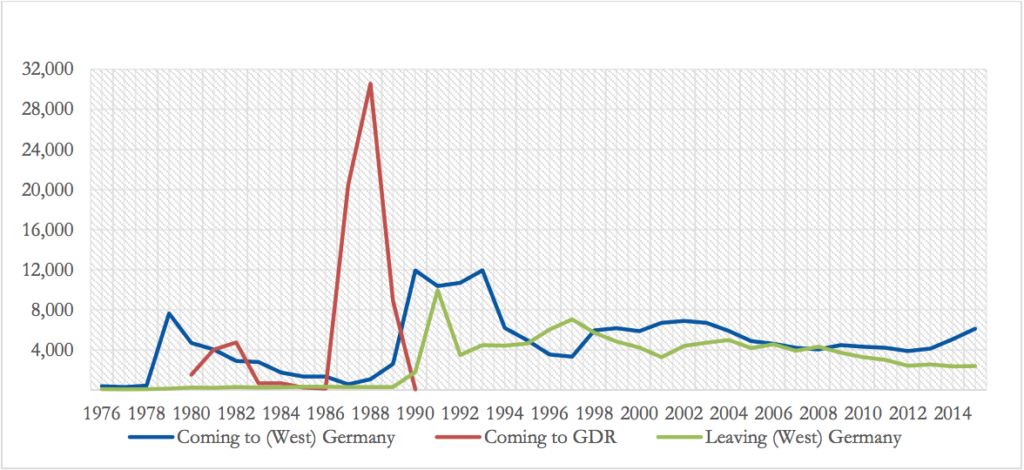
And then there is also an Islamophobic side of the story. Often we think about the rise of anti-Islam sentiment as a postcommunist or a post-9/11 story in Europe. But if one looks further back, one can see it as a reaction both to the Iranian revolution in 1979 and to the rise of a transnational, radical Salafism supported by Saudi Arabia. Then we also have to recognise that parts of socialist Europe had large Muslim minorities, particularly in Yugoslavia, Bulgaria and also in the Soviet Union, in Central Asia. By the mid-1980s, these minorities are seen as potentially threatening, because they are viewed by elites as embracing a set of pan-Islamic cultural values, which are alien to socialism. There’s also an increasing fear that this new form of Islamism will start to attract populations from the Third World in a way socialism once did. And this image of a violent, politically untempered and culturally distinct Islamic world is constructed and used – especially by reform communists – to define their place as part of a peaceful ‘civilised’ European region a decade before the collapse of the system.

[1] Mark, J., Feygin, Y. (2020): The Soviet Union, Eastern Europe and Alternative Visions of a Global Economy, 1950s–1980s. In: James Mark, Artemy Kalinovsky, and Steffi Marung (eds.): Alternative Globalizations: Eastern Europe and the Postcolonial World. Bloomington: Indiana University Press.
[2] Svik, P. (2020): Civil Aviation and the Globalization of the Cold War. London: Palgrave Macmillan. Petrov, V. (2017): A Cyber-Socialism at Home and Abroad: Bulgarian Modernisation, Computers, and the World, 1967–1989. PhD Dissertation. New York: Columbia University.
[3] Tamás Gerőcs and András Pinkasz explain this process in the case of Hungary and the Eastern Bloc with the long-term decrease in uneven terms of exchange. See: Gerőcs, T., Pinkasz, A. (2017): A KGST a világrendszerben: Egy félperifériás kísérlet gazdaságtörténeti elemzése. Eszmélet, 29(113): 15–36. http://epa.oszk.hu/01700/01739/00098/pdf/EPA01739_eszmelet_113_015-036.pdf
[4] See the special issue Labour Mobility in the Socialist World and Its Legacies in the journal Labor History, which is based on a workshop that took place at St. Antony’s College, University of Oxford, on 19–20 May, 2016, as part of the Socialism Goes Global project. Alamgir, A. K. (2018): Labor and labor migration in state socialism. Labor History, 59(3): 271–276). – Remark by Zoltán Ginelli.
[5] See the special issue New Perspectives on Socialism and Human Rights in East Central Europe since 1945 in East Central Europe, 46: 2-3 (2019), edited by Ned Richardson-Little, Hella Dietz and James Mark
[6] Mazurek, M. (2018): Polish Economists in Nehru’s India: Making Science for the Third World in an Era of De-Stalinization and Decolonization. Slavic Review, 77(3): 588–610.
[7] Love, J. L. (1996): Crafting the Third World: Theorizing Underdevelopment in Rumania and Brazil. Stanford: Stanford University Press. https://www.sup.org/books/title/?id=2221
[8] On this issue, see Mark, J., Apor, P. (2015): Socialism Goes Global: Decolonization and the Making of a New Culture of Internationalism in Socialist Hungary. Journal of Modern History, 87(4): 852–891.
[9] On this issue, see: Betts, P., Mark, J., Goddeeris, I., Christiaens, K. (2019): Race, Socialism and Solidarity: Anti-Apartheid in Eastern Europe. In: Anna Konieczna, Rob Skinner (eds.): A Global History of Anti-Apartheid: ’Forward to Freedom’ in South Africa. Palgrave Macmillan. pp. 151–202. – Remark by Zoltán Ginelli.
[10] Boutros Boutros-Ghali (1999): The Marginalisation of Africa. In: Nikolaos A. Stavrou (ed.): Mediterranean Security at the Crossroads: A Reader. Durham, NC: Duke University Press. 21–34.
[11] Goldberg, D. T. (2008): The Threat of Race: Reflections on Racial Neoliberalism. Oxford: Wiley-Blackwell.
[12] Rothberg, M. (2009): Multidirectional Memory: Remembering the Holocaust in the Age of Decolonization. Stanford: Stanford University Press.
[13] Subotić, J. (2019): Yellow Star, Red Star: Holocaust Remembrance after Communism. Ithaca and London: Cornell University Press; Neumayer, L. (2018): The Criminalisation of Communism in the European Political Space after the Cold War. London: Routledge.

